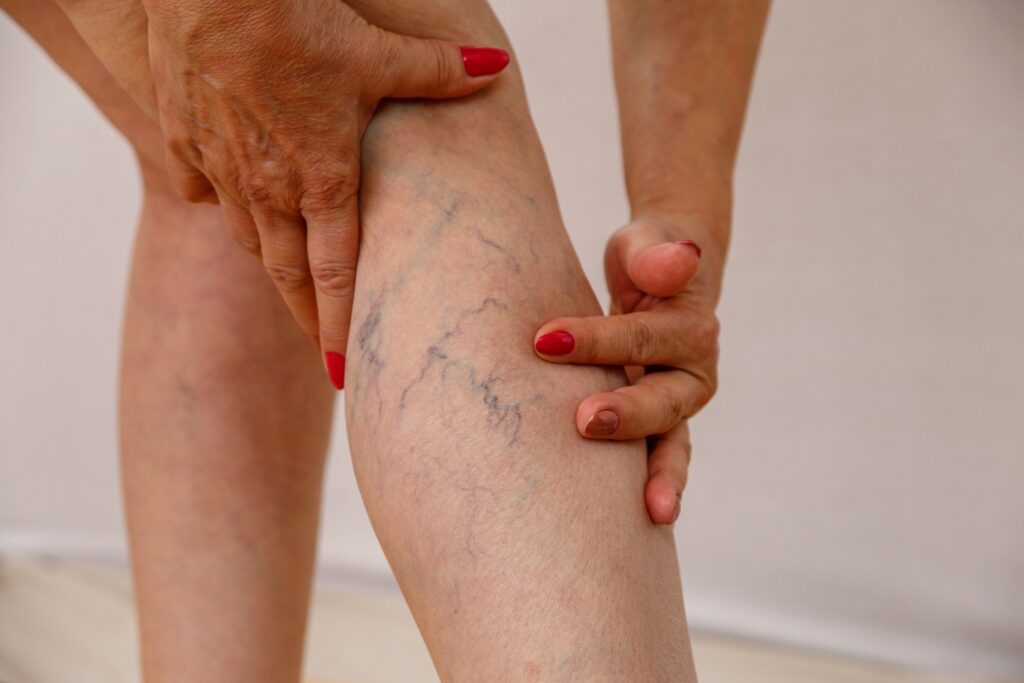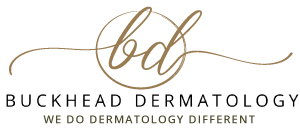Spider Veins Don’t Have to Be Spooky

In honor of Halloween and the typical spider decorations emphasized this week, what better time to look at spider veins, what causes them, and how they compare to varicose veins. Varicose and spider veins are much more common in women than men, but reports show that 30-60% of adults have some form of visible veins on their skin. If you are spooked by the visible veins on your body, knowing and understanding the differences and options to address them from a reputable and licensed dermatologist experienced in spider vein and varicose vein treatments may make this Halloween one to remember.
Spider Veins v Varicose Veins: What’s the Difference?
Spider and varicose veins are caused by weakening blood vessel walls of malfunctioning valves underneath the skin. Spider veins are purple, blue, or red in color and are typically smaller than varicose veins. Spider veins appear to twist and turn, hence why they are called spider veins because some report they look like the legs of a spider (some say more like a tree root). Although spider veins are visible, they are not typically painful like varicose veins and are common on the face and legs. Varicose veins will be raised and appear swollen and much larger than spider veins. Varicose veins can appear anywhere on the skin but are most commonly seen in the pelvic area and legs.
Causes of Spider and Varicose Veins
There are several things that may cause spider veins (telangiectasias) and varicose veins, and some are things individuals can control, and others are not. Some common causes of these visible veins that may be controlled to minimize them are weight and occupation. Obesity has been tied to the appearance of spider and varicose veins, as well as professions that involve continual standing. Teachers, nurses, and hairdressers often complain about spider and varicose veins. On the other hand, factors that can’t be changed are a family history of these veins, puberty, pregnancy, menopause, and a history of blood clots, and some medications related to pregnancy and menopause have been shown to cause spider and varicose veins in some patients. Some patients experience the appearance of veins after trauma or injury or excessive exposure to the sun’s dangerous UV rays.
Symptoms of Untreated Spider and Varicose Veins
It is more common for people to feel discomfort or pain with varicose veins than spider veins. Those suffering from this condition may feel cramping or aching in their legs. Side effects of the condition may be fatigue, restlessness (especially when trying to sleep), a burning or throbbing sensation, tingling, and an overall feeling of heaviness in the legs. Often, elevating legs and wearing compression support socks and leggings can ease some of these symptoms. Women may experience more noticeable discomfort during pregnancy and before their minstrel cycle. Some more severe side effects of the skin condition are ulcers, swelling, and darkened skin around the ankles.
If you feel discomfort like that described above, do not hesitate to visit an experienced varicose and spider vein dermatologist to help overcome the symptoms and find an affordable treatment.
Treatments for Spider Veins and Varicose Veins
There are several treatment options for those suffering from visible and sometimes painful veins. The most common, which can be purchased at a drugstore, are compression stockings. These stockings are designed to put some pressure on the legs in an effort to prevent blood from pooling and reduce swelling. One thing that most dermatologists will work with clients on is things in their lifestyle and environment that can be modified to reduce the symptoms. Hygiene, weight, and activity may be adjusted to help with the condition. Those with occupations that require a lot of standing may need to make time to sit and rest throughout the day, and wearing lower shoes and not high heels has been shown to provide significant relief. Elevating feet when possible and not crossing legs are two things that can easily be changed to help clients with spider and varicose veins.
Dermatologist Administered Treatments
When it comes to your skin, find a dermatologist you trust. Comforting bedside manners and a genuine concern for what you are experiencing are important when needing treatments done in the office. A dermatologist may offer sclerotherapy, which consists of saline injections to help veins gradually disappear. Other treatments involve lasers, radio frequency, and, in some cases, surgery. The good news is that there are many options, and a qualified and licensed dermatologist can review them with clients to find an affordable and manageable treatment plan.
When it comes to dermatology visits and treatments for spider veins and varicose veins, many insurance plans will cover the cost of varicose vein treatments. Spider vein treatments may not be covered, but when you work with a reputable dermatologist like Dr. Sherrie Straughn, she helps each client find an affordable treatment plan. If you suffer from visible spider or painful varicose veins, contact Buckhead Dermatology today for an appointment.
